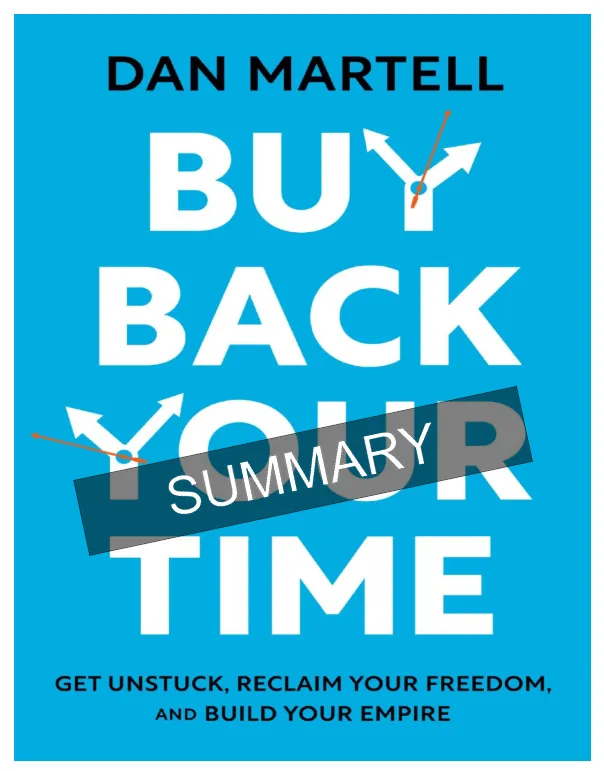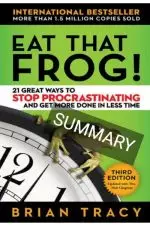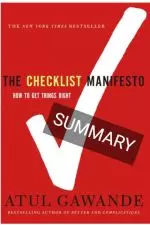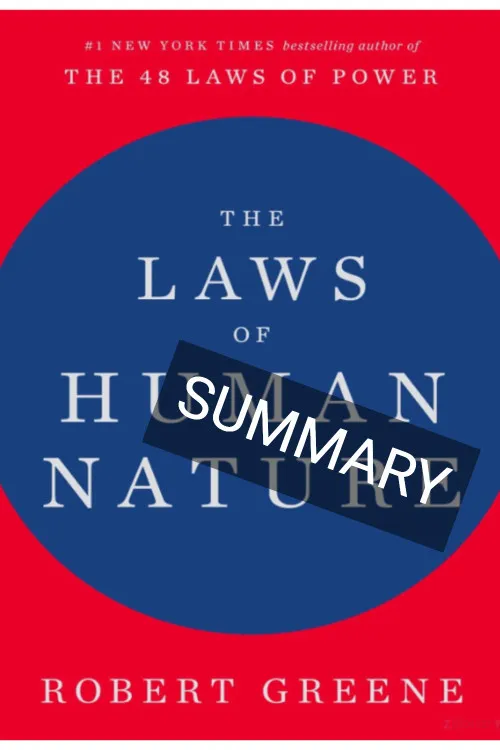The Secret to Happiness: A Complete Guide to Mihaly Csikszentmihalyi's "Flow"
We all want to be happy. It's the driving force behind so much of what we do. We chase wealth, success, and love, believing they are the keys to a fulfilling life. But as psychologist Mihaly Csikszentmihalyi explains in his groundbreaking book, Flow: The Psychology of Optimal Experience, we've been looking in the wrong places.

Happiness isn't something that happens to us. It isn't a destination we arrive at after achieving a goal. Instead, happiness is a state of deep enjoyment and engagement that we can cultivate ourselves, moment by moment. Csikszentmihalyi calls this state Flow.
This comprehensive summary will walk you through the core ideas of Flow, chapter by chapter. It's for anyone who wants to apply these powerful concepts to their life without reading the entire book. Let's dive in and learn how to take control of our experience and find enjoyment in the everyday.
Chapter 1: Happiness Revisited
Csikszentmihalyi begins by challenging our conventional ideas about happiness. He argues that despite unprecedented wealth and comfort, modern people are often plagued by anxiety and boredom. This is because happiness is not the result of external factors like money or luck. It is an internal condition.
Optimal Experience, he says, is the key. These are the best moments in our lives, the times when we feel in control of our actions and deeply engaged. Think of a sailor masterfully navigating a boat, a painter lost in their canvas, or a child carefully placing the last block on a tower. These aren't passive, relaxing moments. They are moments when a person's body or mind is stretched to its limits in a voluntary effort to accomplish something difficult and worthwhile.
This state of total involvement is what he calls flow. It is the secret to a joyful life, a life where you are the one in control of your inner world, regardless of the chaos outside.
Chapter 2: The Anatomy of Consciousness
To control experience, we must first understand consciousness. Csikszentmihalyi presents it as a system that processes information. However, this system has a very limited capacity—it can only handle about 126 bits of information per second. This means what we choose to pay attention to literally creates our reality.
- Attention as Psychic Energy: Attention is our most precious resource. How we invest it determines the content and quality of our lives. A person who can control their attention can control their experience.
- Psychic Entropy: This is a state of inner disorder. When information conflicts with our goals, it creates anxiety, fear, jealousy, or boredom. Our attention is hijacked, and we lose control.
- Order and Flow: The opposite of entropy is inner order, which is the state of flow. In this state, our attention is fully invested in a task, our goals are clear, and our consciousness is harmonious.
- Complexity and the Self: Experiencing flow leads to the growth of the self. The self becomes more complex, which means it is both more differentiated (unique, with rarer skills) and more integrated (connected to the world and others).
Chapter 3: Enjoyment and the Quality of Life
Here, Csikszentmihalyi makes a crucial distinction between two types of positive experiences: pleasure and enjoyment.
- Pleasure is the feeling of contentment that comes from satisfying biological needs (like eating when hungry) or social expectations. It restores order to consciousness but does not produce psychological growth.
- Enjoyment is what happens when we go beyond satisfying a need and achieve something unexpected or new. It requires an investment of attention and results in a more complex self. Reading a challenging book, playing a close game of tennis, or having a deep conversation are all examples of enjoyment.
Csikszentmihalyi then outlines the eight major components of the flow experience:
- A Challenging Activity Requiring Skills: The task is demanding but within reach.
- Clear Goals and Immediate Feedback: You know what you need to do and get instant feedback on how well you're doing.
- The Merging of Action and Awareness: You are so involved that the activity feels spontaneous and automatic.
- Concentration on the Task at Hand: All your attention is focused, and distractions disappear.
- A Sense of Control: You feel you are in command of your actions.
- The Loss of Self-Consciousness: You forget yourself and your worries.
- The Transformation of Time: Hours can feel like minutes, or minutes can stretch out.
- The Autotelic Experience: The activity becomes its own reward. You do it for the sheer sake of doing it.
Chapter 4: The Conditions of Flow
This chapter explores how we can create the conditions for flow. It's not just about what we do, but how we do it.
- The Flow Channel: Enjoyment appears at the boundary between boredom and anxiety. If a challenge is too low for your skills, you feel bored. If it's too high, you feel anxious. Flow exists in the "channel" where challenges and skills are perfectly matched. To stay in this channel, you must continually develop your skills and seek out new challenges.
- The Autotelic Personality: This is someone who has learned to create flow in almost any situation. They are able to turn potential threats into enjoyable challenges. These individuals tend to be less self-centered, more open to experience, and have a strong sense of purpose. This is a personality trait that can be developed.
Chapter 5: The Body in Flow
Our bodies are incredible instruments for creating enjoyment, but their potential often goes untapped. This chapter explores how to use physical skills and senses to experience flow.
- From Fitness to Flow: Activities like sports, dancing, and yoga are not just about health; they are structured ways to use the body to experience flow. By setting goals, developing skills, and pushing our physical limits, we can turn simple movement into profound enjoyment.
- The Senses as a Source of Joy: We can learn to use our senses with greater skill. The "Joys of Seeing" comes from training the eye to appreciate art and nature. The "Flow of Music" comes from active, focused listening. The "Joys of Tasting" involves transforming eating into a culinary art.
- Sex as Flow: Sexuality can be transformed from a simple pleasure into a complex and deeply enjoyable activity by adding psychological dimensions like romance, genuine care, and the continuous discovery of new challenges within the relationship.
Chapter 6: The Flow of Thought
Just as with the body, the mind can be a powerful source of enjoyment. This requires learning to control the mind, whose natural state, Csikszentmihalyi argues, is chaos.
- Structuring Consciousness: Without a focus, our minds tend to drift toward worries and anxieties. Mental activities provide the structure needed to create order.
- The Play of the Mind: Activities like reading, writing, engaging in conversation, and solving puzzles are all ways to play with ideas and symbols.
- Mastering Symbolic Systems: The true power of the mind is unlocked when we learn a symbolic system—like history, science, or philosophy. By approaching these fields as an "amateur" (in the original sense of one who loves the activity), we can create a self-contained world in our mind, providing endless opportunities for flow and making us less dependent on external stimulation.
Chapter 7: Work as Flow
For most of us, work is seen as a necessary evil. But this chapter argues that work can, and often does, provide more flow than leisure.
- The Paradox of Work: Studies show that people report being in flow far more often at work than during their free time. Work has built-in goals, rules, and challenges. Yet, we often wish we were doing something else. This is because we are conditioned by a cultural stereotype that work is an imposition on our freedom.
- The Waste of Free Time: Leisure is often unstructured. Without the discipline to create our own goals and challenges, free time can lead to boredom and anxiety. Passive entertainment like watching TV is a common but low-quality way to structure attention, rarely leading to flow.
- Making Work Enjoyable: We can either find an "autotelic job" (one that is inherently gamelike, like surgery) or become an "autotelic worker" (like the welder who found complexity in his routine job). The key is to find opportunities for action, develop skills, and focus on the task at hand.
Chapter 8: Enjoying Solitude and Other People
Our relationships with others and with ourselves are the two most critical factors in the quality of our lives.
- The Pain of Loneliness: We are social creatures. Being alone is often a negative experience because, without external structure, our minds descend into psychic entropy.
- Taming Solitude: The ability to find enjoyment when alone is a crucial skill. It requires structuring your own attention with mental games, hobbies, or learning. This skill makes you less dependent on the environment for your well-being.
- Flow in Relationships: Relationships with family and friends are the greatest source of both joy and misery. To make them enjoyable, they must be treated like flow activities. This means investing attention, having shared goals, and constantly finding new challenges in each other to keep the relationship from becoming stale.
Chapter 9: Cheating Chaos
How can we maintain inner order when faced with tragedy, stress, and unavoidable suffering? This chapter explains how to transform adversity into a manageable challenge.
- Tragedies Transformed: Csikszentmihalyi shares stories of people who, after devastating accidents like paralysis or blindness, found their lives became more meaningful. The tragedy provided them with a crystal-clear goal: to overcome the new challenge. This focused their energy and created profound inner order.
- The Autotelic Self and Coping: People who can transform stress into challenge possess an "autotelic self." They do this through three main steps:
- Unselfconscious Self-Assurance: Believing in your ability to handle the situation without being egocentric.
- Focusing Attention on the World: Shifting attention away from your inner turmoil and onto the external reality to find a solution.
- Discovering New Solutions: Being open to new goals and paths when old ones are blocked.
Chapter 10: The Making of Meaning
The final step in achieving an optimal life is to unify all of life's disparate activities into a single, overarching flow experience. This is done by creating meaning.
- What is Meaning? Meaning is created when we integrate our actions into a coherent life theme. It consists of:
- Purpose: Having a unifying, ultimate goal that gives significance to all lesser goals.
- Resolution: Committing to that purpose and acting to achieve it.
- Harmony: Achieving an inner congruence where your feelings, thoughts, and actions are all aligned.
- Finding a Life Theme: This is the challenge of modern life. In the past, culture and religion provided these themes. Today, many of us must discover our own. This life theme transforms your entire existence into a single flow activity, where every moment has significance in the context of your ultimate purpose.
This doesn't have to be a grandiose goal. Whether it's raising a good family, creating a beautiful garden, or advancing human knowledge, a self-chosen purpose is what gives life meaning and transforms it into a joyful, unified experience.
Your Path to Flow
The message of Flow is both simple and profound: the key to a happy life lies not in what happens to you, but in how you learn to control the contents of your consciousness. By transforming your work, your relationships, and even your moments of solitude into enjoyable, challenging activities, you can build a more complex self and find meaning in every moment.
The journey to a flow-filled life starts with a single, intentional step. What will yours be?








